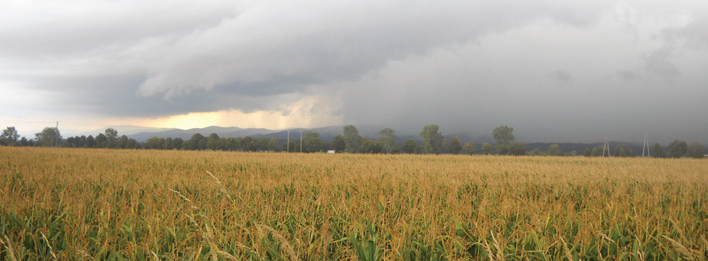November 2016

One of the first thoughts on a farmers mind at the start of another day on the farm is what is the weather going to bring today. Many years ago farmers relied on the previous evening’s general weather report and then other signs such as the prevailing ‘rain wind’ in one’s farming region and whether or not the Cape South Easter was blowing.
These days with many weather satellites positioned above us there is much information and data available as to past, current and predicted weather patterns as well as rainfall received. Country wide, regional and district rainfall records are easily accessed via the internet as are the predictions for rainfall on a district level for weeks ahead. Smart phones can be used to access forecast or programmed to give you messages as to the current rainfall predictions on a daily basis.
Rainfall received, conservation and prudent use of this moisture is one of the main factors influencing the financial success or failure of your farming operation.
The accuracy of the predictions has been much improved over the years. However, the predictions might not be that accurate for the specific location of your farm or farms. The micro topography in your region can also influence whether or not a particular farm falls into a water shed area or rainfall shadow.
Long term recording of the actual rainfall received on each farm and the different microclimates found therein and on differing soil type blocks of land is important. This data will enable the farmer or a management team to be able to carry out detailed and more accurate production planning and risk assessment in your farming operation.
The equipment required to start can range from the readily available conically shaped plastic measuring unit with holder, or better still, the older metal holders with a gradated glass beaker inside to fully fledged digital weather station. One can place the plastic type on a pole at each location on the farm to be measured. The plastic types seem to weather quite rapidly and become brittle and crack during the cold winter months.
A better option is to make a small steel cabinet with the rain gauges attached or mounted together with a high low thermometer and place for the recording sheet or book, plus non detachable pen, protected from the rain. It is thus quite convenient when doing the rounds after any rainfall to record the rainfall and temperature for collection at the end of the month. The temperature data can be used to calculate the actual heat units experienced in a particular year and compared with actual yields realised.
The farmer can keep a record book of daily recordings with notes covering storm strength, instance of sudden thunder storms or general rain conditions, hail experienced and any other pertinent observations. These results can then be tabulated on another sheet under months for the year and compared to your local weather station or previous location or farm records. If you buy a farm or hire lands from a retiring farmer it is advisable to ask for any old rainfall records so that comparisons can be made with the rainfall patterns that you will experience. These records can be transferred to excel spreadsheets with various graphs being created to show comparisons with prior years, long term averages, or national long term rainfall data. The possibilities for the analysis of the data are endless.
Using the information
The rainfall data gathered over a long time becomes more valuable than the data in any one year. Hindsight is always an exact science and it is always the rainfall that will be realised in the coming season that is important. Rainfall patterns can be varied as was experienced last year with some farms within a short distance from others receiving almost double the rain.
The data can be utilised in many ways for dry land as well as irrigation farmers. The long term patterns can be used to generally predict the rainfall runoff to be captured in your farm dam or river systems. Full dams imply that any irrigation development can be fully utilised in the coming summer or winter season. More accurate predictions and calculations can be made as to the net water usage required from dams for supplementary or full irrigation.
Extensive livestock farmers on natural or planted pastures or irrigated pastures can use the long term information to plan water application and the related tonnage of pastures to be expected for fodder flow programme analysis.
This year the Eastern Free State has had in excess of 125 mm’s over May, June and July. Dry land farmers can do profile holes to assess, under their cultivation methods, how much moisture was preserved in the soil. In these areas farmers, using optimum cultivation methods, whether or not under conservation tillage or not, can plan on being able to plant with a minimum of pre-planting rainfall required. This knowledge can alleviate the stress involved in planning and predicting crop income for the 2016/2017 production year.
Conclusion
Recording and knowing the long term rainfall patterns in various areas or lands on your farm can aid in determining the viability of cash cropping or other enterprises going into the future. Knowing the facts can reduce your farming risk. Good luck for the coming farming season.
Article submitted by a retired farmer.
Publication: November 2016
Section: Pula/Imvula